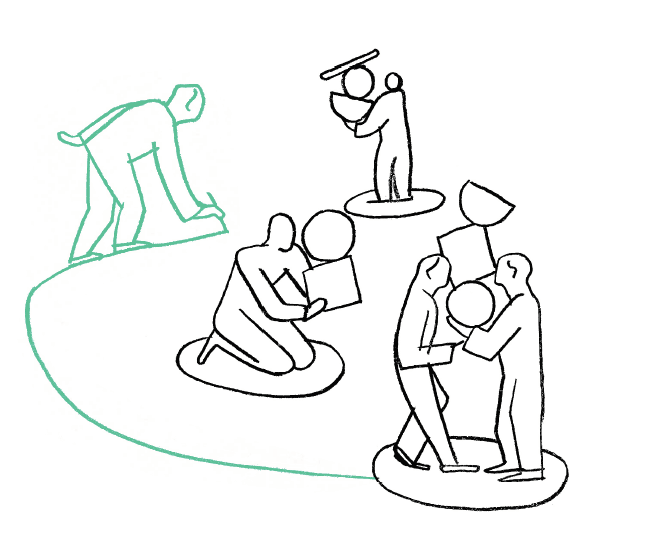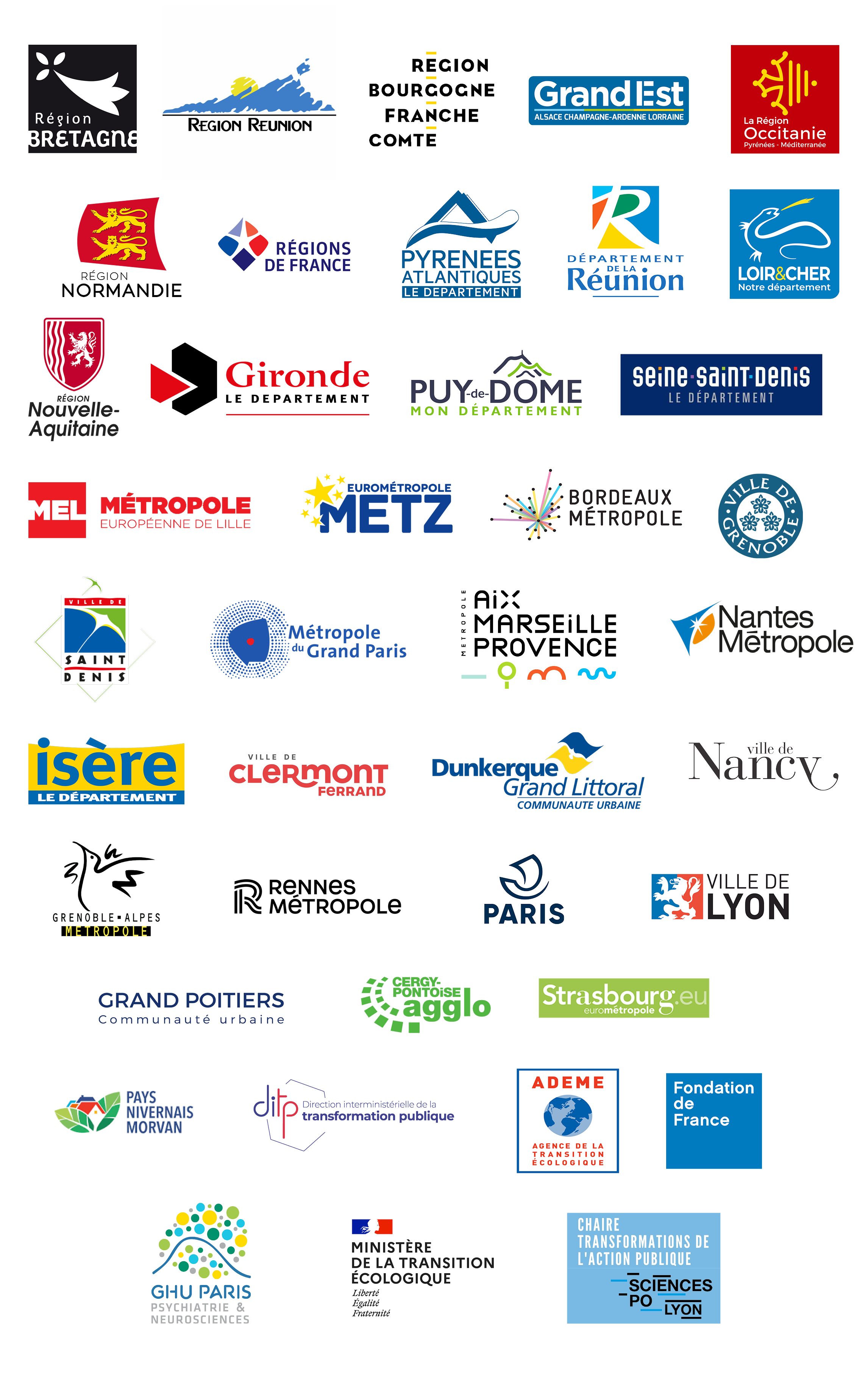Is the future of public action being fabricated before our very eyes, in the multiple and spontaneous innovations or other institutional tinkering brought by the current crisis, brutal and unexpected? This is the question that has been bothering us for more than a month. And the farther the “end of the crisis” seems, the more we need to understand what is going on “during the crisis”, the questions it raises and the responses it seems to offer.

Illustration Julien Defait.
Covid19: an electroshock in field of French public innovation
We have been patiently working on public transformation for several years. And here we are, left behind ! Within a few weeks, local authorities, state services and the territorial forces are trying to innovate. In this critical context, the imperative of continuity of public service is shaking up public management and transforming decision-making methods. New modes of cooperation are appearing, the relationship between public institutions, users and citizens is being reshuffled.
Obviously, all these transformations in situ arouse our enthusiasm and our curiosity. They actually demonstrate the responsiveness of public agents and the inventiveness of public organizations, improvising solutions ; they shake up top down modernization logics. How are such innovations implemented in the field? What are their forms, stakeholders and impacts? There is an urgent need to keep track of all these initiatives before they disappear or normalize. Others share this objective, having regard to initiatives initiated by several public operators (notably by the CNFPT with Riposte Créative), local governments and organisations of elected officials such as the AMF, the ADCF, the AMRF or France Urbaine or even some local newspapers (see the Médiacité approach).
At the same time, such developments do question us.
What should we think of the “strange objects” (re) appearing with the crisis, such as the “public action reservist” or the concept of “essential activity”? How may we interpret the partnerships between fablabs / makers and local governments on the production of masks ? What kind of vision of the role of the public actor and of its modes of action do such all out initiatives foster? Build to cope with the crisis, the many responses of public actors do renew the perception of public action. They don’t all converge on the same horizon. What trends are they echoing? Should we seek to perpetuate them or to emphasize their temporary nature?
Innovation is not an end in itself, and often remains ambiguous. Before defending or decrying it, it seems essential to take the time to understand what is at stake at the moment, and to put it in perspective of a broader understanding of public transformation, and of its dynamics.
Resilience: a necessary path for public transformation
The current crisis reinforces our conviction on that public transformation and resilience need to be more interrelated: public transformation makes resilience possible, resilience contributes to and give a direction to public transformation. Resilience, for a territory, its inhabitants, its infrastructures, its institutions, involves preparing for shocks, such as the one we are currently experiencing. It also implies to reduce the effect of latent crises, which weaken it over the long term. We can not not wait for such difficulties to anticipate, act, and organize over time.
But the reorganization of public action to contribute to territorial resilience cannot be decreed, and public transformation can help to build the path to get there. How to make the tools of design and innovation work for territorial resilience? This new situation calls for solidly anchoring public innovation with the aim of strengthening our collective well being, in the long term, far beyond the criteria of user experience and cost optimization.
In this matter, the crisis is revealing the vulnerabilities and the resilience capacities of our administrations: how was it possible to shelter the homeless in record time? to ensure local social services? It brings out agile modes of delivering public services. Certain forms and practices seem to act as accelerators of public policies (reduction of homelessness, fight against loneliness, relocation of the economy …). So how can we build on these numerous experiences to build public capacities that are adapted to the world to come?
Outside the walls of the administration, the preexisting capacities of each territory made possible (or not) the proliferation of initiatives to mitigate the effects of the crisis. What are the patterns of this local capacity to act ? In the light of past crises, with a view to future crises, how may public stakeholders structurally strengthen the resilience capacities of their territory? Where shall we start ?
For all these reasons, we propose to initiate an investigation on the outcomes of the intersection between public transformation and territorial resilience, in the context of the current crisis. Aimed to be implemented in the next six months, it brings together the 27th Region (with the support of Bloomberg Philanthropies), Partie Prenante, Vraiment Vraiment, as well as a network of public innovation laboratories and companions familiar with the tools of territorial resilience.
Conceived as an archeology of a future in the making, the approach combines the collection of in situ signs and interpretative hypotheses. To do this, it relies on an analysis framework fed by the combination our previous experience. Its aim is to prepare the projects to be undertaken in the wake of the crisis, so that public transformation can usefully reveal and strengthen the resilience of the territories.
How shall we name the project: Inventory of the future of public action? Horizontal observatory of resilience in action? Action research on the innovation capacity of public officials? The future will tell.
Grégoire Alix-Tabeling, co-fondateur de Vraiment Vraiment
Sylvine Bois-Choussy, cheffe de projets coopération internationale à la 27e Région
Julien Defait, designer à la 27e Région
Mathilde François, Partie Prenante
Noémie Fompeyrine, responsable de la Mission Résilience, Ville de Paris
Louise Guillot, cheffe de projets à la 27e Région
Nadège Guiraud, directrice des programmes et des projets à la 27e Région
Manon Loisel, Partie Prenante
Yoan Ollivier, co-fondateur de Vraiment Vraiment
Laura Pandelle, designer
Nicolas Rio, Partie Prenante
Stéphane Vincent, co-fondateur de la 27e Région



